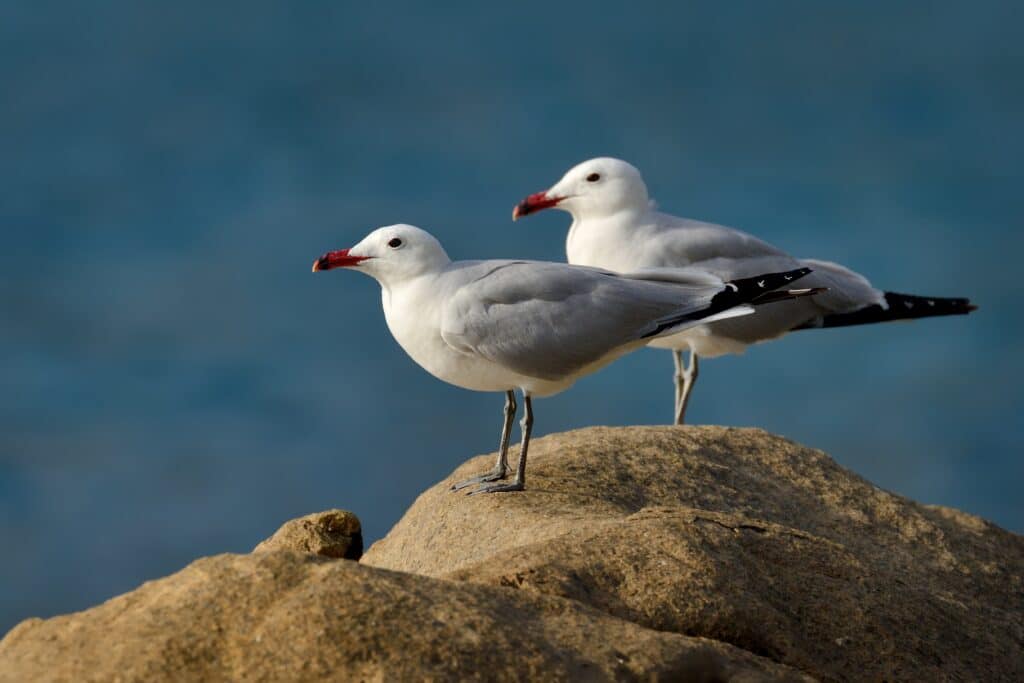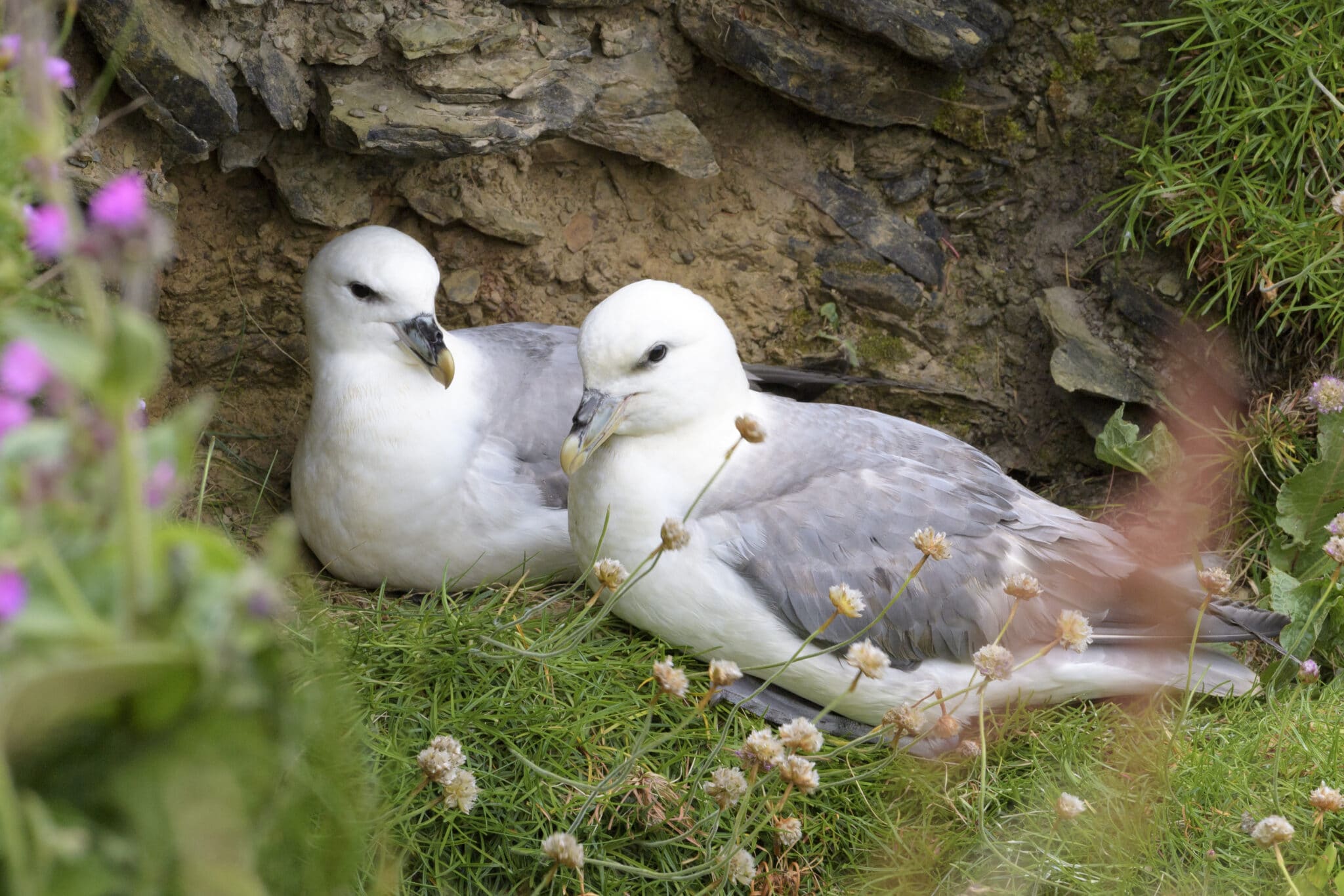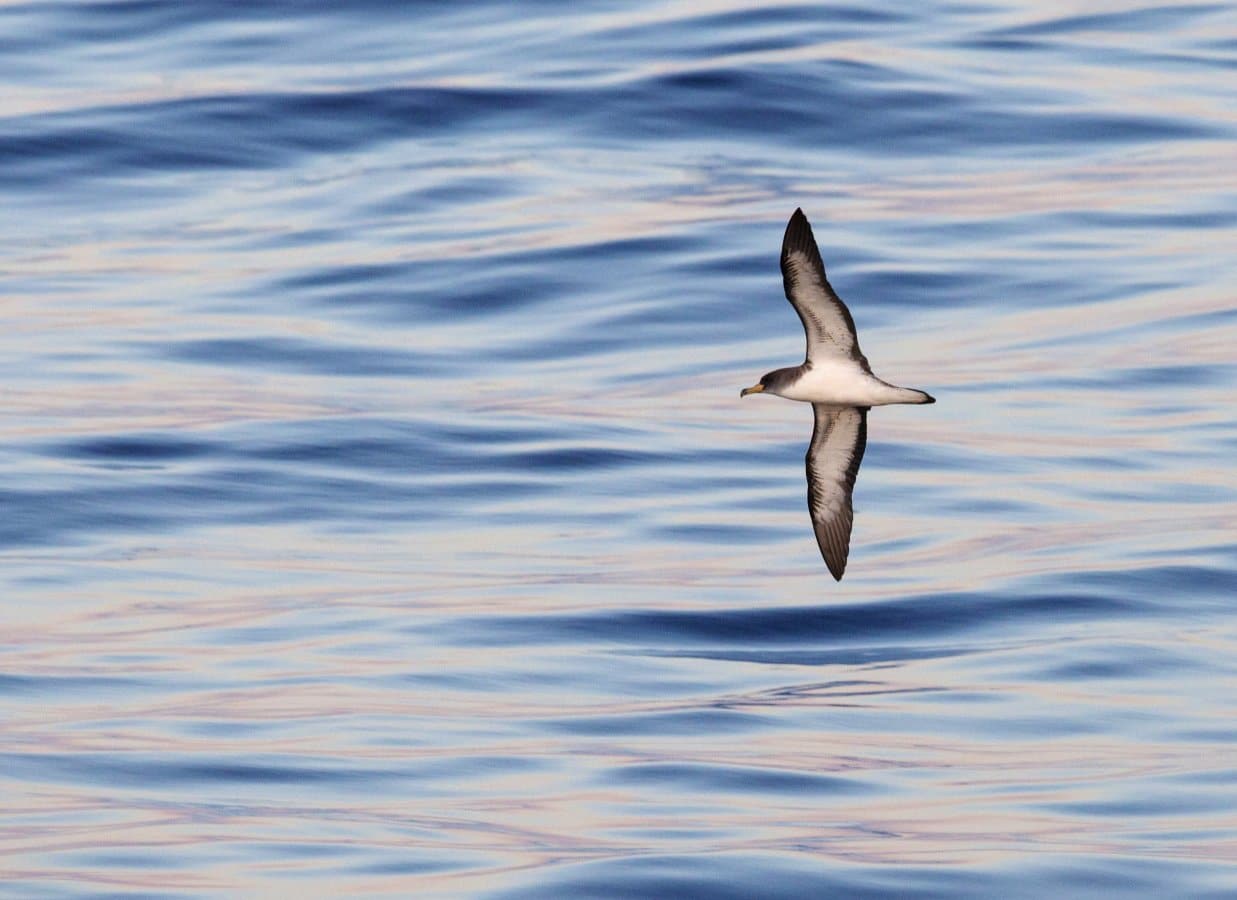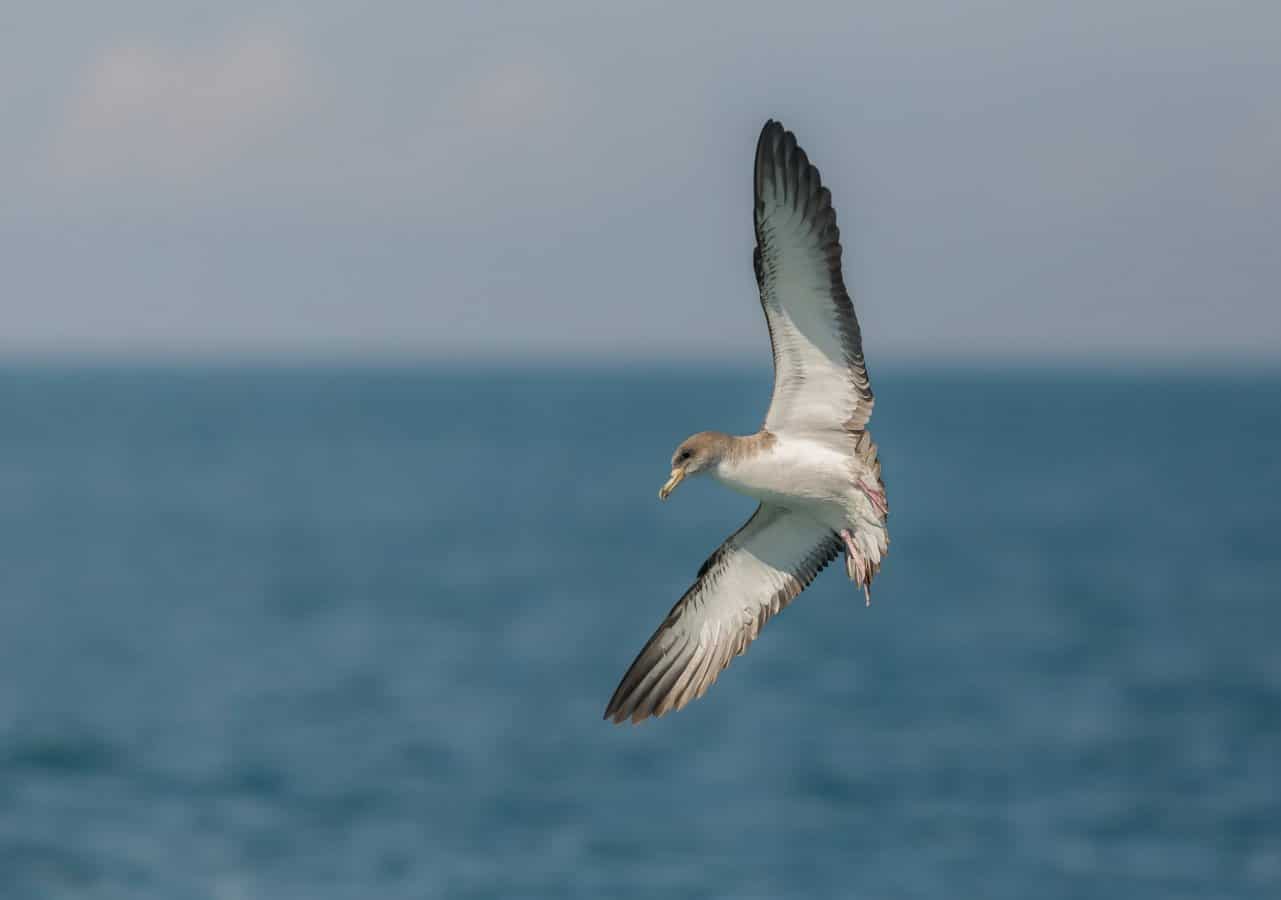Seabird of the month: Audouin’s Gull (Larus audouinii)

The feathers of Audouin’s Gulls are predominately white except for their pale grey upper wings and black outer wings. They have dark eyes and blood-red bills with a black and yellow tip. Their legs have a dark grey, almost greenish colour. The male and female birds look very similar.
by Antonio Vulcano
IUCN status: Vulnerable (Global)
Global population: Unknown but population trend is decreasing
Description:
Wingspan: 117- 128 cm
Life span: over 20 years
Distinct features: The feathers of Audouin’s Gulls are predominately white except for their pale grey upper wings and black outer wings. They have dark eyes and blood-red bills with a black and yellow tip. Their legs have a dark grey, almost greenish colour. The male and female birds look very similar.
The plumage of these seabirds transforms when they are three years old. Prior to that, juvenile Audouin’s Gulls have a dark-grey, brown plumage, a grey face and a black bill. Compared to other gull species, they have a more elongated and elegant figure, and longer, narrower wings.
Main prey: Unlike most other gulls, the Audouin’s Gulls are not scavengers. Their diet mainly consists of herrings, sardines, and anchovies that they mainly catch at night. They usually rely on discards from fishing vessels. They can also forage on land, catching small mammals and lizards along the coast.
Breeding
Audouin’s Gulls breed on small islands, in colonies or alone. They lay 2-3 eggs in ground nests found amongst rocks or vegetation. They breed from March to August. Incubation lasts up to 28 days and birds fledge after approximately eight weeks.
Population distribution
This seabird mainly breeds in Spain, Portugal, Italy, and Greece. Historically, one of the strongholds of the species has been the Ebro Delta, in Catalunya (Spain). Spain still hosts the most important colonies of Audouin’s Gulls, mainly on the Chafarinas Islands, Columbretes Islands, Balearic Islands, and in Murcia.
During their migration, hundreds, or even thousands of birds stop over the Algarve. They normally migrate to the Northwest coast of the African Sahara, all the way down to Senegal, but some birds also winter in the Aegean Sea and in Turkey.
Recently, the Portuguese population of the Audouin’s Gull has increased and the country now hosts the biggest colony of these seabirds Ilha Deserta de Faro, in the Algarve, is the only place where these gulls breed in Portugal and is home to approximately 4200 pairs.
This gull species was observed for the first time in Portugal in the mid-1990s. They first tried to establish a colony in Castro Marim and in the most eastern part of the Estuary, arriving to Ilha Deserta first in 2008. It’s still unknown why these birds moved West, but we do know that the decrease of these seabirds in the Mediterranean is partly linked to overfishing and the deterioration of fish stocks.
Main threats
- Bycatch
- Invasive Alien Species
- Problematic Native Species
- Pollution
- Tourism & Recreational Activities
BirdLife and the Audouin’s Gull
Our Portuguese Partner SPEA is coordinating a LIFE project with the aim to restore some of the key habitats and species of the Ilhas Barreira, including the Audouin’s Gull. Find out more about this LIFE project here.
Our Spanish Partner SEO/BirdLife has followed the recent developments that have contributed to the drastic destruction of the colony in Ceuta and the local group has witnessed a string decline of the colony in Melilla.
Fun facts
This seabird is named after Victor Audouin, a French naturalist, and ornithologist among other things.
The Italian Island of Elba is the perfect home for species like the Audouin’s Gull because they can find the perfect conditions and habitats for breeding. Given their rarity, beauty, and importance to the area, this seabird is actually the symbol of the Tuscan Archipelago National Park.
You might come across this seabird far away from the sea! Some individuals sporadically visit Northern latitudes. A juvenile Audouin’s Gull was even spotted close to Sheffield, in the UK!
Image credit: Audouin’s Gull – Larus audouinii ©phototrip.cz
Relates News
Stay up to date
Sign up to receive the latest bird conservation news. You’ll also receive updates about our projects, science and other ways to get involved including fundraising.
Thank you for your support, we are committed to protecting your personal information and privacy. For more information on how we use your data, please see our Privacy Policy. You can unsubscribe from emails at any time by using the link in the footer of any email from us.




